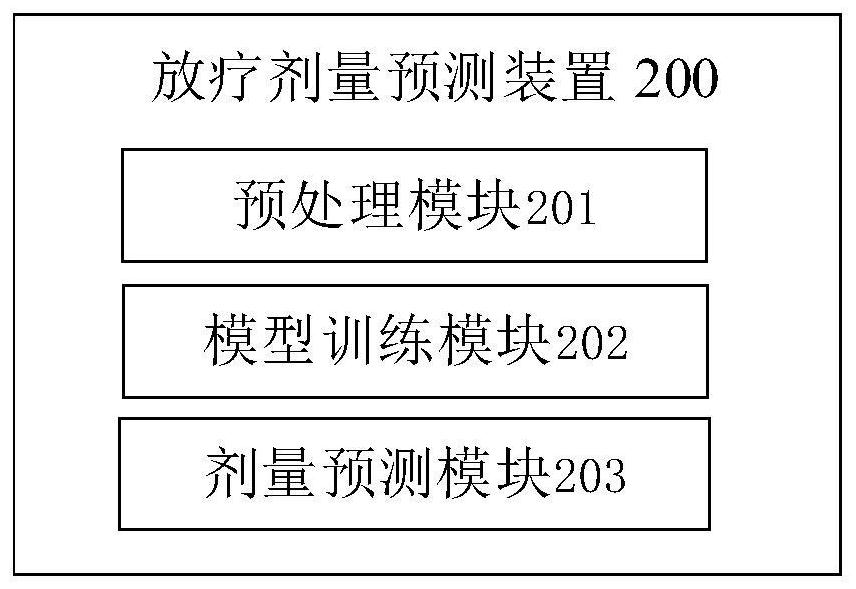Radiotherapy dose prediction method and device
A dose prediction and dose technology, applied in radiation therapy, X-ray/γ-ray/particle irradiation therapy, treatment, etc., can solve the problems of difficult dose calculation and optimization, long time, etc.
- Summary
- Abstract
- Description
- Claims
- Application Information
AI Technical Summary
Problems solved by technology
Method used
Image
Examples
no. 1 example 1
[0023] figure 1 It is a schematic flowchart of a radiotherapy dose prediction method according to the first embodiment of the present invention, as shown in figure 1 As shown, the method includes the following three steps.
[0024] Step S101: Preprocessing the training data. According to the patient's medical image, the patient phantom is established; the dose distribution H of radioactive particles in the patient phantom is calculated using the first calculation method of radiotherapy dose; the dose distribution L1 in the uniform water phantom is calculated using the TG-43 method, and the tissue difference is used The qualitative correction method corrects the dose distribution L1 to obtain the dose distribution L of radioactive particles in the patient phantom; the position of the radioactive particles is modified several times, and the dose distributions H and L are recalculated each time the position is modified.
[0025] Exemplarily, the patient phantom may be three-dim...
no. 1 example
[0032] figure 2 It is a schematic diagram of dose distribution of a radiotherapy dose prediction method according to the first embodiment of the present invention. Such as figure 2 as shown, figure 2 (a) is a schematic diagram of the dose distribution of radioactive particles in the water model calculated by the TG-43 method; figure 2 (b) is figure 2 (a) Schematic diagram of dose distribution after dose distribution correction. Since the TG-43 method directly obtains the radioactive particles in the uniform water model, therefore figure 2 The dose distribution 1 in (a) is a uniform circle, and the dose distribution after heterogeneity correction is as follows figure 2 The dose distribution in (b) is shown in 2.
[0033] In an optional embodiment, the first calculation method of the radiotherapy dose is a Monte Carlo simulation method. Monte Carlo simulation calculates the dose distribution based on the computer simulation of the physical process of the particles ...
Embodiment 2
[0041] The embodiment of the present invention provides a radiotherapy dose prediction device, which is mainly used to implement the radiotherapy dose prediction method provided in the above-mentioned content of the embodiment of the present invention. The radiotherapy dose prediction device provided by the embodiment of the present invention will be described in detail below.
[0042] image 3 It is a structural schematic diagram of a radiotherapy dose prediction device according to the second embodiment of the present invention. Such as image 3 As shown, the radiotherapy dose prediction device 200 includes the following modules:
[0043] Preprocessing module 201, which is used to establish a patient phantom according to the patient's medical image; calculate the dose distribution H of radioactive particles in the patient phantom by using the first calculation method of radiotherapy dose; use the TG-43 method to calculate the dose distribution H in the uniform water phantom...
PUM
 Login to View More
Login to View More Abstract
Description
Claims
Application Information
 Login to View More
Login to View More - R&D
- Intellectual Property
- Life Sciences
- Materials
- Tech Scout
- Unparalleled Data Quality
- Higher Quality Content
- 60% Fewer Hallucinations
Browse by: Latest US Patents, China's latest patents, Technical Efficacy Thesaurus, Application Domain, Technology Topic, Popular Technical Reports.
© 2025 PatSnap. All rights reserved.Legal|Privacy policy|Modern Slavery Act Transparency Statement|Sitemap|About US| Contact US: help@patsnap.com



